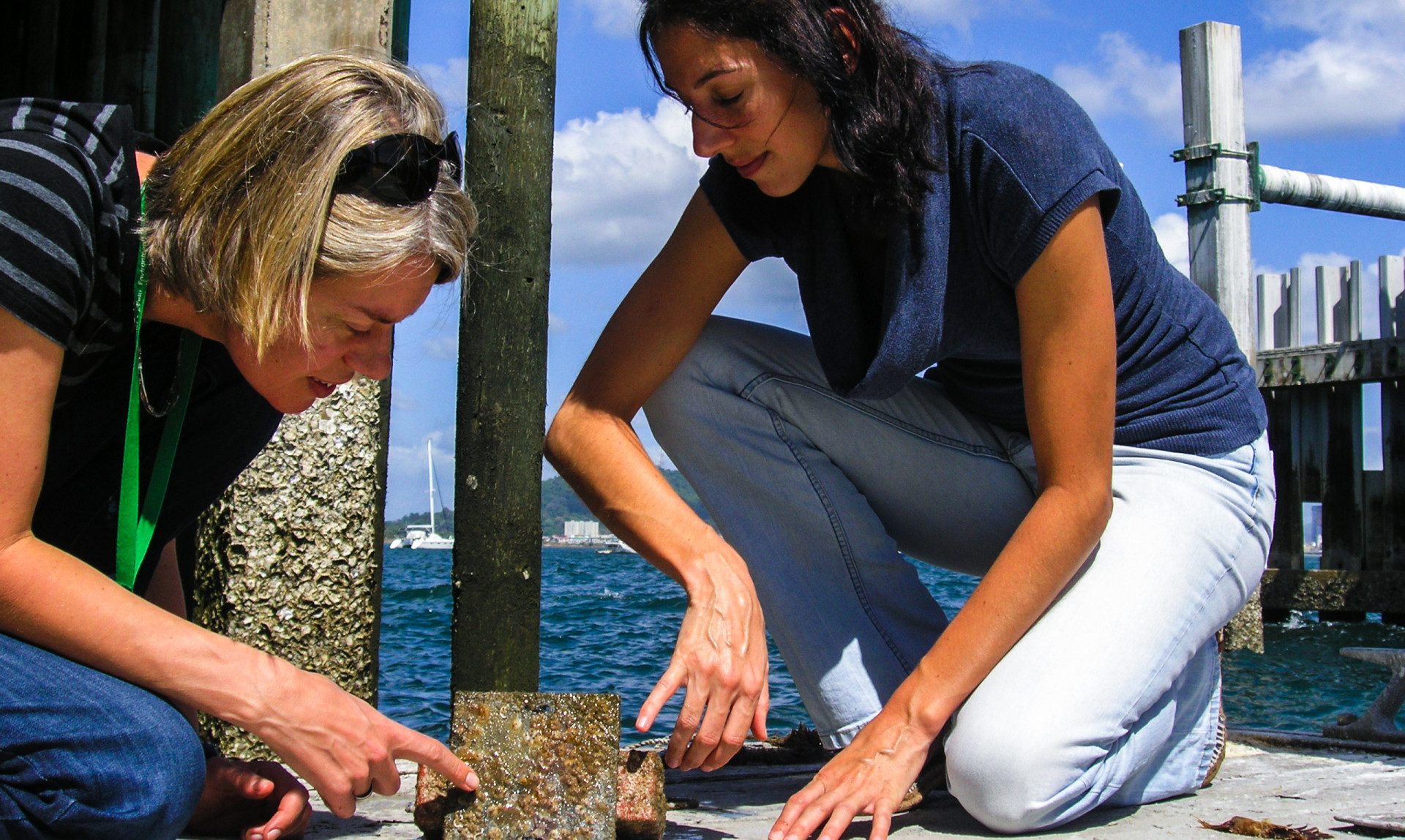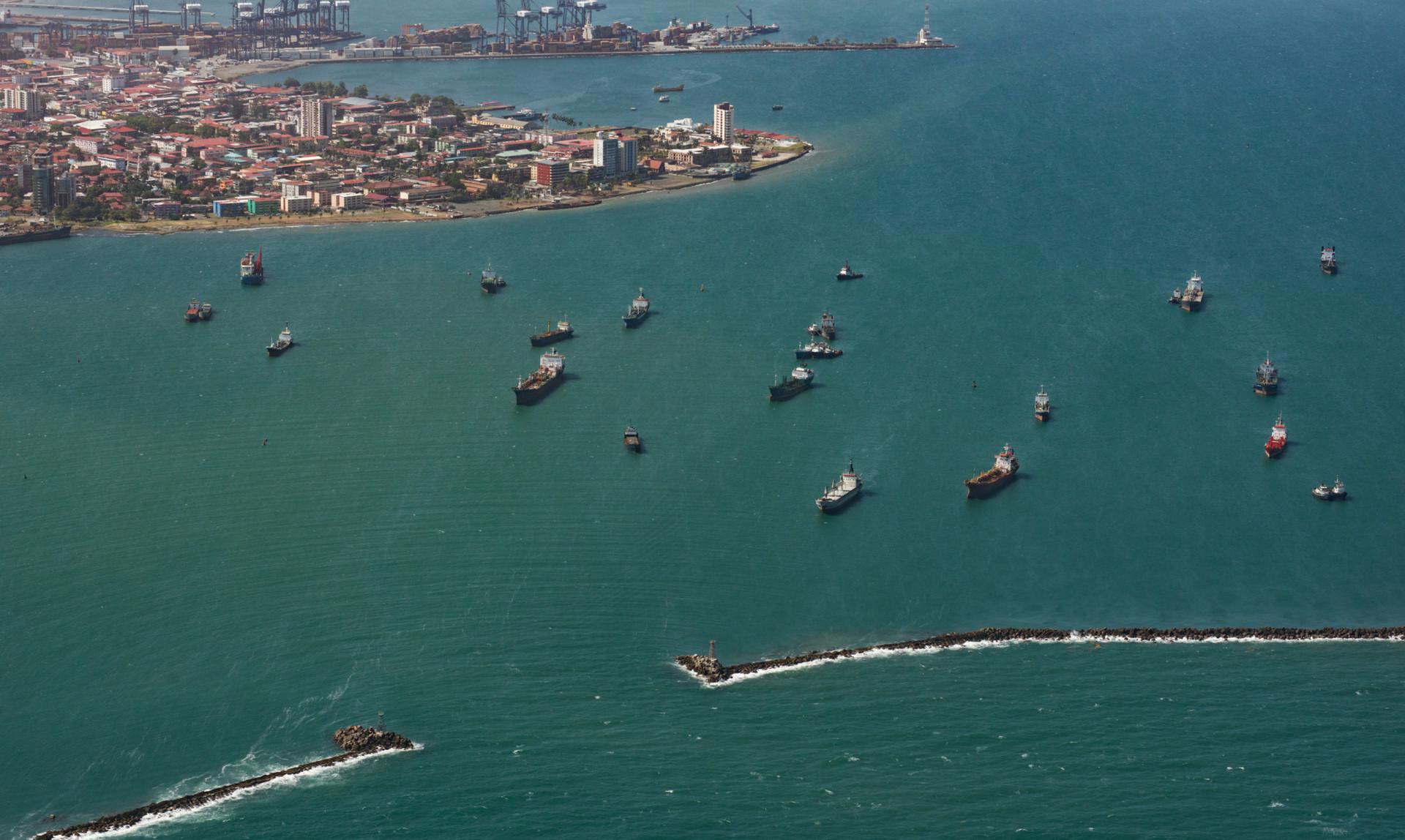A
marine
invader
Species invasion through
Panama Canal? Pacific jingle
shell found in Caribbean
Colón, Panama
Scientists first discovered the shiny sea critter in 2009. Genetic testing suggested it crossed the canal on more than one occasion.
In 2009, a team of Smithsonian Tropical Research Institute researchers raised sea-critter covered PVC plates from a marina in Limón Bay on Panama's Caribbean coast and found something unexpected: Peruvian jingle shells, bivalves native to the Pacific. In subsequent years the small creature, known for its thin and iridescent shells, appeared on settlement plates in other locations around the Atlantic side of the Panama Canal.
They suspected they had discovered a new introduction to the Atlantic of a species that may have passed through the interoceanic waterway. First, they needed to answer a question: Could Anomia peruviana survive exposure to 12 hours of fresh water, the time required to cross the canal? They put plates with A. peruviana in water from Gatun Lake, the artificial body of water that comprises the majority of the Panama Canal. Some 25 percent survived a half-day in the water. Subsequent genetic tests from several sites confirmed that the bivalve had successfully made it to the Caribbean, likely on a number of occasions. The findings were published in Aquatic Invasions in December 2013.
“We identified several unique A. peruviana lineages on the Atlantic side, suggesting that this is not a case of a single introduction," said STRI scientist Kristin Saltonstall, a co-author of the study. "Rather, multiple individuals have survived the transit across Gatun Lake and established at different sites. However, we don’t know the extent of their distribution or how quickly they are spreading.“
“Potential effects on ecosystems can be competition with native species, especially with its sister species Anomia simplex, as they occupy the same habitat and likely have a very similar diet and life history,” said STRI's Carmen Schlöder, the study's lead author.
“Also, if two very closely related sister species (separated by the isthmus) are in contact they could potentially hybridize.”
The 50-mile (80-kilometer) Panama Canal has been transited more than one million times since its inauguration almost 100 years ago, potentially providing organisms with endless opportunities to stow away on the vessels of international trade. The jingle shell could have crossed as an adult stuck to the hull of a ship, or in larval form in a ship's ballast water.
So far, however, scientists are surprised they have not found more introduced species on either side of the canal. This is probably due to a combination of factors: The quite effective freshwater barrier of Lake Gatun, differences in marine ecosystems on either side of the canal, and the probability that many organisms are still undetected or simply not reported.
“While there are many other introduced species on either side of the Canal, it is surprising that we don’t see more successful marine invasions move across the isthmus," said STRI's Mark Torchin, another co-author. "The fresh water likely provides a significant barrier to invasion for most marine species. This would not be the case if we were dealing with a sea-level canal.”
Schlöder, C., Canning-Clode, J., Saltonstall, K., Strong E. E., Ruiz, G. M., and Torchin, M.E. 2013. The Pacific bivalve Anomia peruviana in the Atlantic: a recent invasion across the Panama Canal? Aquatic Invasions, 8(4): 443-448. doi:10.3391/ai.2013.8.4.08


